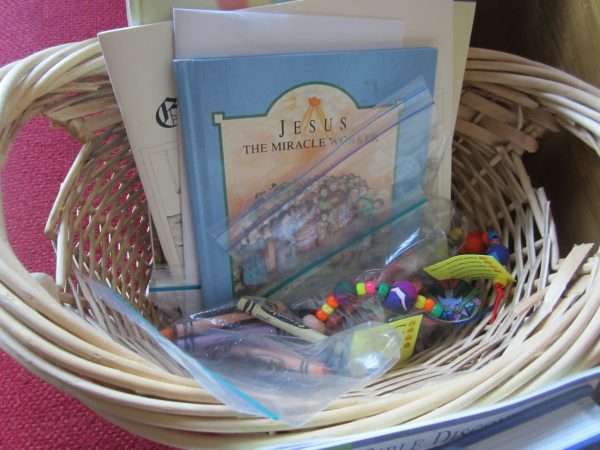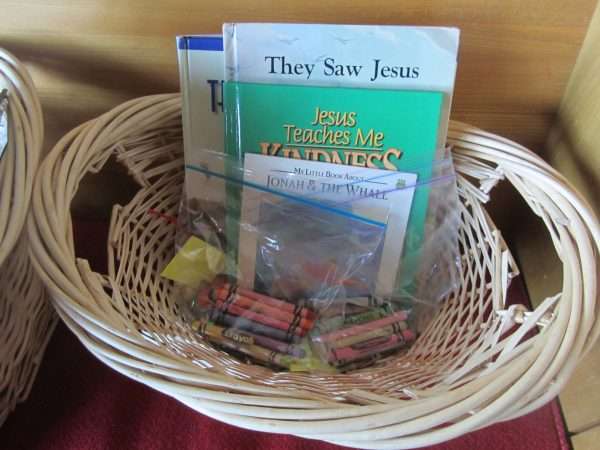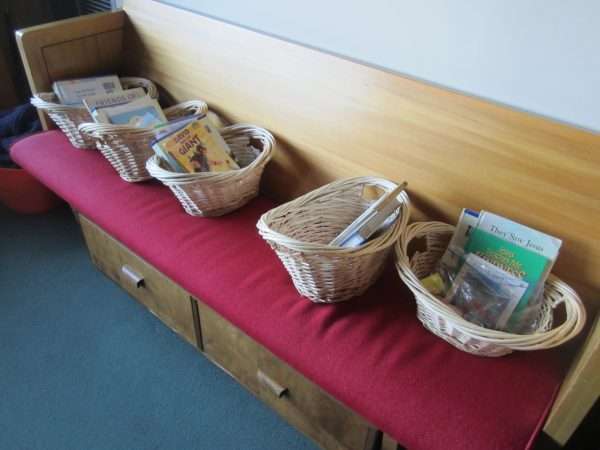EIGHT TO TEN YEARS
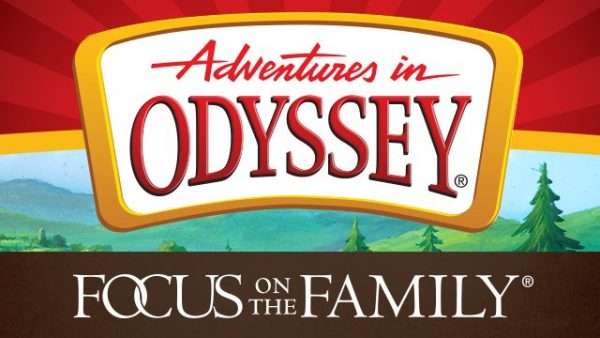 Adventures in Odyssey.
Adventures in Odyssey.
Produced by Focus on the Family, Adventures in Odyssey is a long-running radio program that is set in the fictional mid-American town of Odyssey. Whit is the wise elder statesman of the community who helps kids figure out solutions to life’s problems through a Christian and Biblical perspective. This often happens at his soda fountain shop called “Whit’s End.” He also has a time machine called the “Imagination Station,” which allows characters to travel back in time – whether to the battle of Fort McHenry at Baltimore or to the stables in Bethlehem with Mary and Joseph. Originally in cassette tape format and then compact disc (CD), Adventures in Odyssey episodes can be downloaded online nowadays (http://www.whitsend.org/).
The Bible App for Kids (https://www.bible.com/kids).
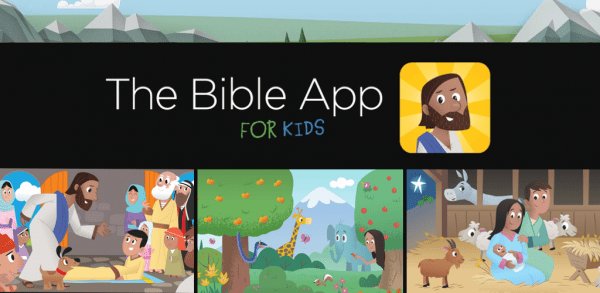 An app for devices that allows children to interact with Bible stories through animated visuals. Thiscan be helpful in allowing kids to engage with Scripture through the technology of their generation. Like all electronic devices, parents and leaders should monitor the amount of time spent on the device.
An app for devices that allows children to interact with Bible stories through animated visuals. Thiscan be helpful in allowing kids to engage with Scripture through the technology of their generation. Like all electronic devices, parents and leaders should monitor the amount of time spent on the device.
Hastings, Selina. Illustrated by Eric Thomas. The Children’s Illustrated Bible. New York: Dorling Kindersley, 1994.
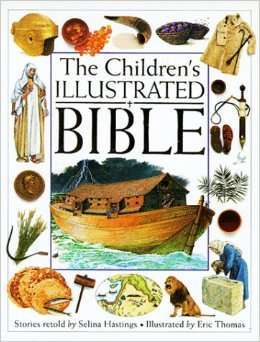 A very comprehensive collection of Bible stories with colorful and detailed visuals aids such as pictures, maps, diagrams, and artwork. It includes introductions to the Bible as a whole, the Old Testament, and the New Testament. It also has a glossary of names and a useful index oftopics. Each Bible story is retold in a way that a parent could read to their child while the child looks at the pictures. Many of the visual aids provide the cultural and historical background information relevant to each particular story (http://www.amazon.com/Childrens-Illustrated-Bible-Selina-Hastings/dp/1564584720).
A very comprehensive collection of Bible stories with colorful and detailed visuals aids such as pictures, maps, diagrams, and artwork. It includes introductions to the Bible as a whole, the Old Testament, and the New Testament. It also has a glossary of names and a useful index oftopics. Each Bible story is retold in a way that a parent could read to their child while the child looks at the pictures. Many of the visual aids provide the cultural and historical background information relevant to each particular story (http://www.amazon.com/Childrens-Illustrated-Bible-Selina-Hastings/dp/1564584720).
Jacob’s Ladder (Toy).
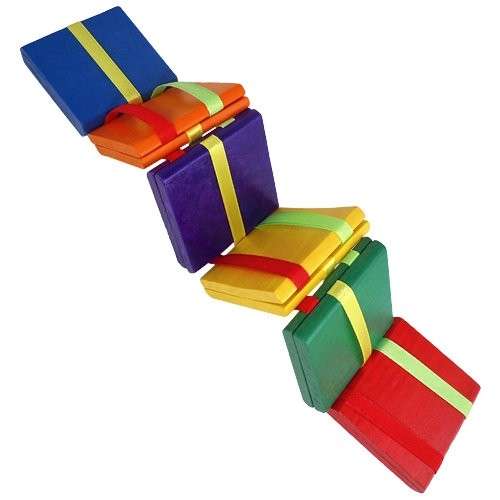 This traditional wooden toy is a set of small wooden squares linked by a ribbon. The ribbon weaves in and out of the blocks so that when you hold the toy a certain way, the blocks fold down on one another and givethe illusion of a falling ladder. The toy can also be configured into various positions to imitate everything from a table to a dog. The name of the toy (Jacob’s Ladder) opens up a conversation the parent or ministry leader can have with the child(ren) about Jacob’s dream at Bethel (Genesis 28:10-19). In the same way that the toy has a mesmerizing appeal to it, so also God mesmerized Jacob in a dream about a ladder. That ladder represented a portal to heaven (as angels went up and down on it). It was through this gate/portal that God spoke to Jacob and declared the covenant promise that had been given to Jacob’s grandfather, Abraham (Gen 28:13-15). Later, in the New Testament, Jesus alluded to this ladder when he told Nathaniel that he would see “the angels of God ascending and descending on the Son of Man” (John 1:51). This was Jesus’ declaration that he himself was the ladder (the portal between heaven and earth) to God the Father. Here are someinstructions on how to make an oversized version (http://www.sermons4kids.com/instructions-ladder-toy.pdf). It can also be purchased here: (http://www.amazon.com/Toysmith-6195-Jacobs-Ladder/dp/ B000RAEBL2/ref=sr_1_2?ie=UTF8&qid=1454428925&sr=8-2&keywords=jacob%27s+ladder).
This traditional wooden toy is a set of small wooden squares linked by a ribbon. The ribbon weaves in and out of the blocks so that when you hold the toy a certain way, the blocks fold down on one another and givethe illusion of a falling ladder. The toy can also be configured into various positions to imitate everything from a table to a dog. The name of the toy (Jacob’s Ladder) opens up a conversation the parent or ministry leader can have with the child(ren) about Jacob’s dream at Bethel (Genesis 28:10-19). In the same way that the toy has a mesmerizing appeal to it, so also God mesmerized Jacob in a dream about a ladder. That ladder represented a portal to heaven (as angels went up and down on it). It was through this gate/portal that God spoke to Jacob and declared the covenant promise that had been given to Jacob’s grandfather, Abraham (Gen 28:13-15). Later, in the New Testament, Jesus alluded to this ladder when he told Nathaniel that he would see “the angels of God ascending and descending on the Son of Man” (John 1:51). This was Jesus’ declaration that he himself was the ladder (the portal between heaven and earth) to God the Father. Here are someinstructions on how to make an oversized version (http://www.sermons4kids.com/instructions-ladder-toy.pdf). It can also be purchased here: (http://www.amazon.com/Toysmith-6195-Jacobs-Ladder/dp/ B000RAEBL2/ref=sr_1_2?ie=UTF8&qid=1454428925&sr=8-2&keywords=jacob%27s+ladder).
Johnson, Andy. Lantern Music. Multiple music albums (http://www.lanternmusic.org/).
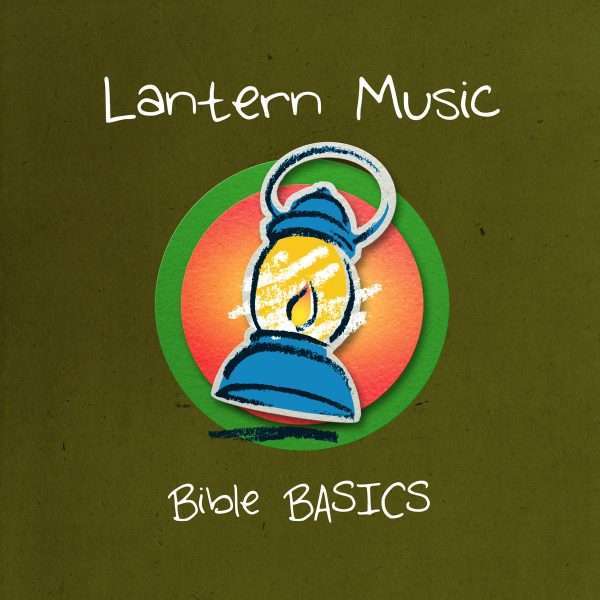 Andy Johnson serves as a worship leader for the Children’s Ministry program at Valley Church in West Des Moines, IA. He has compiled three albums of original worship songs where the lyrics are Scripture verses. Johnson uses simple sounds from the guitar, keyboard, and drums. The musical style could be considered modern folk pop (like Jason Mraz). The tunes are catchy and memorable so that the kids can memorize Scripture in a way that is engaging on their level.
Andy Johnson serves as a worship leader for the Children’s Ministry program at Valley Church in West Des Moines, IA. He has compiled three albums of original worship songs where the lyrics are Scripture verses. Johnson uses simple sounds from the guitar, keyboard, and drums. The musical style could be considered modern folk pop (like Jason Mraz). The tunes are catchy and memorable so that the kids can memorize Scripture in a way that is engaging on their level.
The Lads (http://www.theladsband.com/).
This is a music band of young men who hail from New Zealand. They have since based themselves in the Nashville, TN area and they tour the country performing shows that communicate Biblical truths through upbeat kid-friendly music styles. They have CD’s of their music as well as a few television show episodes that feature their music and storytelling with a Christian message.
Mauss, Doug ed. Illustrated by Sergio Cariello. The Action Bible. Colorado Springs: David C. Cook. 2010.
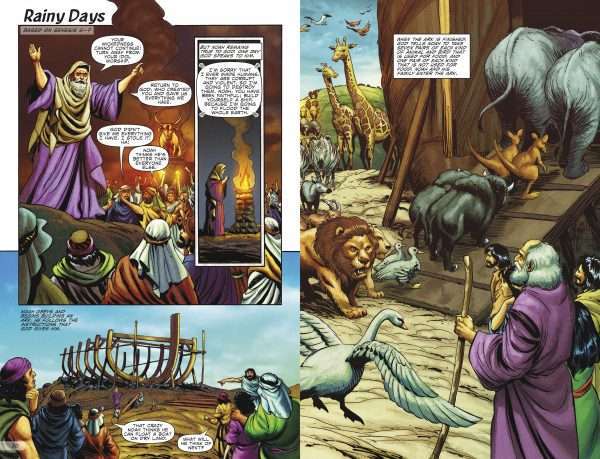 This is another comic-book style Bible (similar to the The Picture Bible mentioned above). This one has a lot of bright colors and high-energy action depictions. It is drawn to resemble an action-packed graphic novel or superhero comic series. It is very visually stimulating. Parents and teachers could read through stories with the children and appreciate the artistic medium. I would suggest balancing something like this with time and space for quiet reflection and prayer away from the images. See more at the home website for the product: (http://www.theactionbible.com/).
This is another comic-book style Bible (similar to the The Picture Bible mentioned above). This one has a lot of bright colors and high-energy action depictions. It is drawn to resemble an action-packed graphic novel or superhero comic series. It is very visually stimulating. Parents and teachers could read through stories with the children and appreciate the artistic medium. I would suggest balancing something like this with time and space for quiet reflection and prayer away from the images. See more at the home website for the product: (http://www.theactionbible.com/).
Meiklejohn, Julie ed. Amazing Science Devotions for Children’s Ministry. Loveland, CO: Group Publishing. 1999.
This book is a collection of 41 science-based object lessons that teach Biblical truths. For example, there is a lesson that teaches kids how to make a rainbow using everyday household supplies (a cup of water, tape, scissors, a piece of paper, and sunlight). The teacher or parent can lead the child in the science project and then discuss the Biblical connection (in this case, the beauty of God’s creation and the promise he gave Noah never to judge the earth again with a global flood). Children learn the God-authored beauty of science as well as a particular Biblical truth alongside the science. There is an introduction and an index of Scriptures and topics (https://www.group.com/product/9780764421051-amazing-science-devotions-for-children-s-ministry.do).
Noah’s Ark 504-piece puzzle: Christian Brands RC717 Noah’s Ark Jigsaw Puzzle by Gifts of Faith, 2013.
Puzzles are a great way for a family to come together around an “unplugged” activity that helps people slow down in this media-driven society. When the subject matter of the jigsaw puzzle is a Biblical scene, it allows the family to discuss the Bible story in organic and meaningful ways. Certain details that may be missed in a quick glance at a picture suddenly become relevant as everyone looks for a certain piece of the puzzle. Aside from the subject matter of the puzzle, there is a valuable payout in terms of family togetherness, cooperation, patience, and working together towards a goal. This 504-piece puzzle is appropriate for older elementary children through adults.
Worship Response Stations.
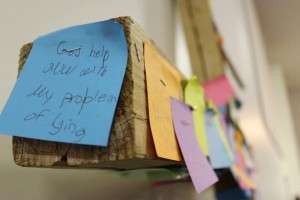
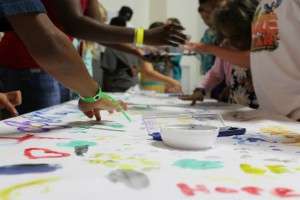 For centuries, Christians have developed creative ways to respond to God. From the sacrament of communion to the lighting of prayer candles, Christians throughout history have practiced a wide variety of worship response methods. While many liturgical churches have response experiences and stations often built into their liturgy or curriculum, non-liturgical contemporary churches often lack the same variety and scope of response opportunities. For example, many churches today view the “altar call” as their definition of a response to a worship service. I like to challenge that thinking and attempt to create what I call “worship response stations” in order to expand our perspectives on how we can creatively respond to God in worship. I have found this idea to be especially helpful in children’s ministry because children enjoy variety and interactive experiences. Here is my pinterest board with worship response station ideas from many different people: (https://www.pinterest.com/jessejoyner/worship-response-stations/).
For centuries, Christians have developed creative ways to respond to God. From the sacrament of communion to the lighting of prayer candles, Christians throughout history have practiced a wide variety of worship response methods. While many liturgical churches have response experiences and stations often built into their liturgy or curriculum, non-liturgical contemporary churches often lack the same variety and scope of response opportunities. For example, many churches today view the “altar call” as their definition of a response to a worship service. I like to challenge that thinking and attempt to create what I call “worship response stations” in order to expand our perspectives on how we can creatively respond to God in worship. I have found this idea to be especially helpful in children’s ministry because children enjoy variety and interactive experiences. Here is my pinterest board with worship response station ideas from many different people: (https://www.pinterest.com/jessejoyner/worship-response-stations/).
Here is an exceprt from my blog post about worship response stations from August 7th, 2014 (https://jessejoyner.com/worship-response-stations/):
I speak at many camps each summer, but this one stuck out because of the format they asked me to follow. First of all, there were two chapel services each day for the kids – one in the morning and one in the evening. The morning service was designed to be the “main” service of the day (in terms of worship music and teaching time) with the evening service being more of a “review and respond” service.
So in the evenings, I taught for about 10 minutes, just reviewing the points we learned about in the morning. Then, for the remainder of the service (another 45 minutes to an hour), we spent responding to God’s Word through the format of worship stations.The camp told me this ahead of time. So I wrote up some station ideas that went along with my lessons each day. The leadership at the camp then took all my ideas and turned them into reality by getting the supplies, setting up the stations, and manning them each night.
The results were amazing. We realized that kids learn and respond in a variety of ways, depending on their learning languages. Some kids respond well with hands-on and interactive activities while others are fine being still or reading. Most kids have a variety of learning styles inside of them anyway, so it’s good to have the different stations so they can move around freely as they like. I’d like to take a few posts to share the ideas and pictures from the worship response stations.
Here is a quick rundown of the stations. I will go into more details with each one in subsequent posts.
- Prayer Counseling – This is the traditional idea of having prayer counselors on hand if a kid or adult needs prayer for anything. This is usually the only “station” people offer as a way of response at camp or in church. We still used it, but it was only one of many ways to respond.
- Question Cards – If the kids had a question about God or the Bible, they wrote them down on a 3×5 card and handed it to an adult. The adult would then attempt to find the answer in the Bible and answer the question. If they couldn’t find it, then they would say “I don’t know” or “I’ll look it up later and get back with you.” This was a surprisingly popular station for the kids.
- World Prayer Map – There was a map on the wall and the kids would go up and place a sticker star on a country, city, or location of a people group and pray for them.
- Slime Buckets – One night, we taught about Jonah. In order to explore the idea of what it may have felt like to be inside the belly of a great fish, the kids put their hands in slime. This was obviously very popular.
- Blindfolded Prayer – Also along the story of Jonah (who prayed in pitch darkness inside the belly of the fish), we had the kids put on a blindfold and then sit or kneel and pray. One leader said this station was the first time he had seen one of his boys pray. Sometimes it takes some creative way that really connects with a particular kid to open them up to things like prayer and worship.
- Kids Pray for Adults – I will devote an entire post to this station, as it was my favorite of all the stations. Kids were on hand to pray for adults who wanted prayer. It was humbling for adults and exciting for kids. More on this one later.
- The Wooden Cross – This is another traditional station that many groups have used for years. I believe it is still very powerful in form and function. The large wooden cross reminds us of what Jesus did for us and we have the chance to lay prayers and confessions at the cross by writing them on a piece of paper and nailing them to the cross.
- Prayer Journaling/Drawing – This was also a very popular one. We had stacks of paper and boxes of crayons, markers, and pencils on hand. The kids would simply grab some paper and something to write/draw with and freely journal or draw pictures as prayers, thanksgivings to God, and other worship thoughts on their minds.
- Finger Painting – On the day when we learned about Creation, the kids got to draw pictures of things that God made on a large white poster using finger paints. This was extremely popular and looked very pretty when it was all done.
- Other Stations – There were also stations with bead bracelets, mouse traps, clay and play-do, bowls of fruit, a white board with a dry erase marker, and Scripture reading. I will discuss each one in subsequent posts.
*This list comes directly from a paper I wrote for a class at Trinity Evangelical Divinity School in Deerfield, IL in March 2016. The class was ES 7524 (Education and Ministry Experiences for Children) taught by Dr. Magdalene Larson.

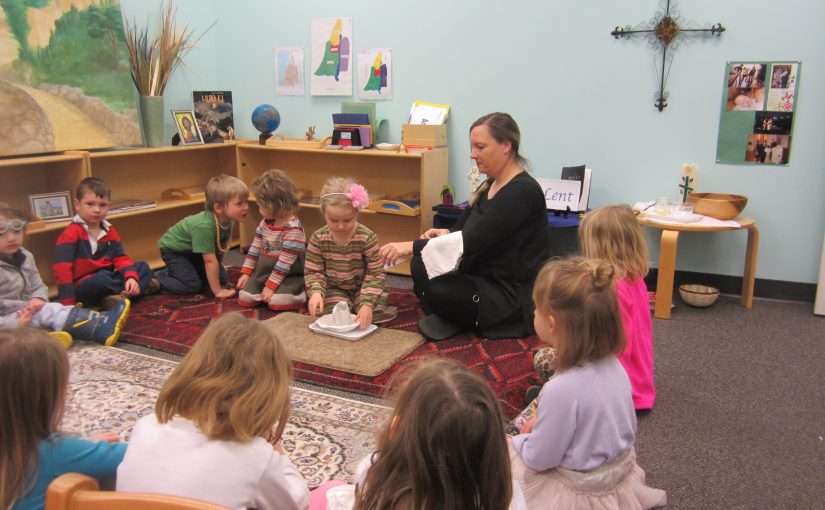
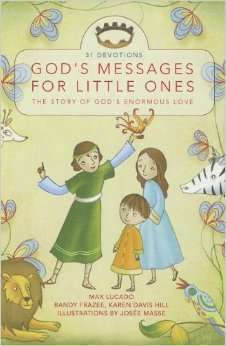 Lucado, Max, Randy Frazee, and Karen Davis Hill. Illustrated by Josee Masse.
Lucado, Max, Randy Frazee, and Karen Davis Hill. Illustrated by Josee Masse.  Lloyd-Jones, Sally and Jago.
Lloyd-Jones, Sally and Jago. 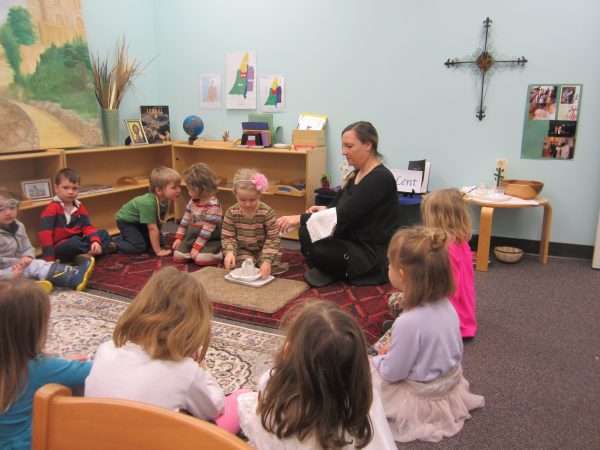
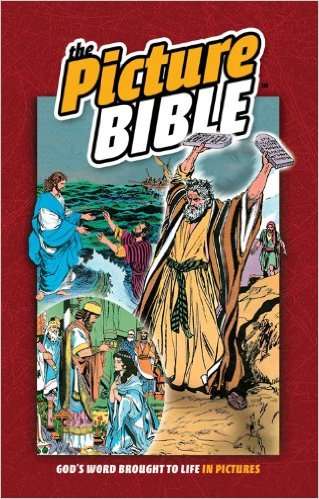 Hoth, Iva.
Hoth, Iva. 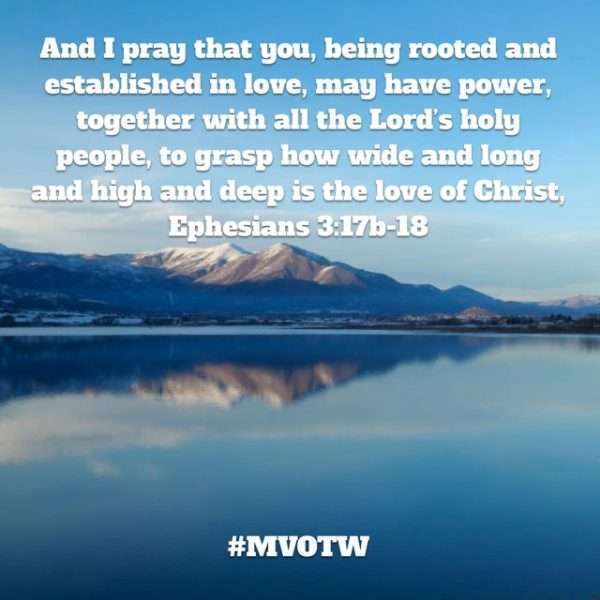 Memory Verse of the Week.
Memory Verse of the Week.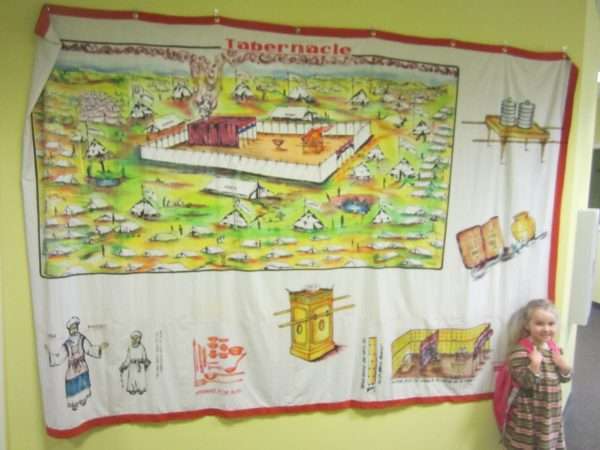 Tabernacle Diagram Canvas – Alpha Artistic Evangelism.
Tabernacle Diagram Canvas – Alpha Artistic Evangelism.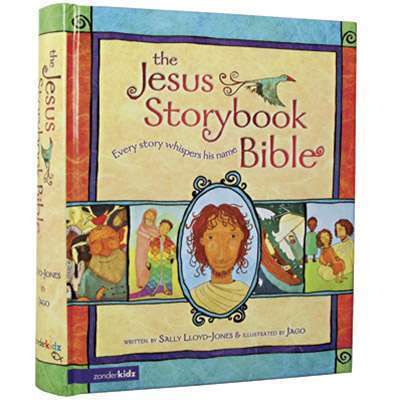
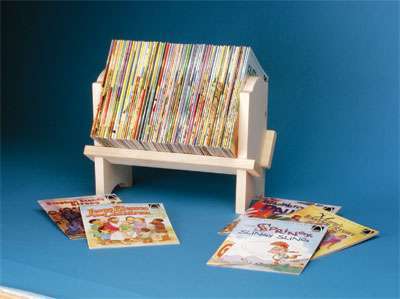 Arch Books
Arch Books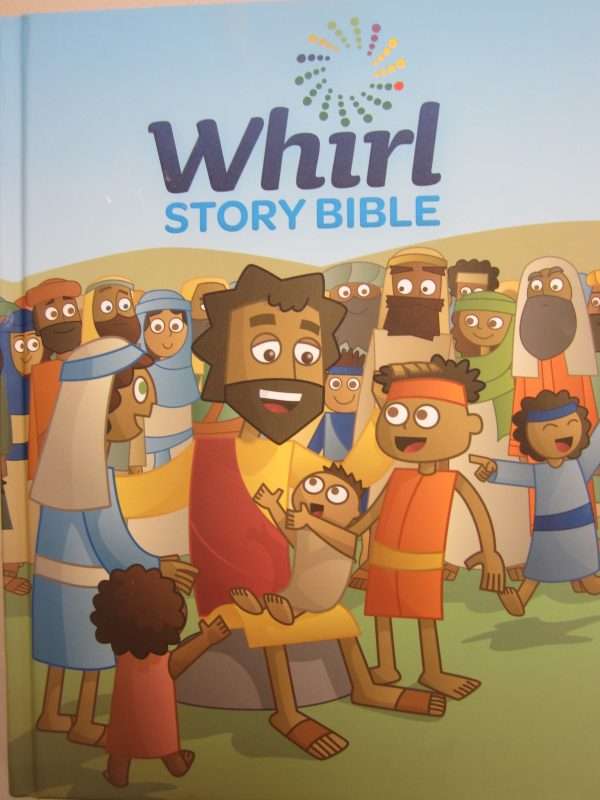 Gibbons, Erin ed.
Gibbons, Erin ed. 